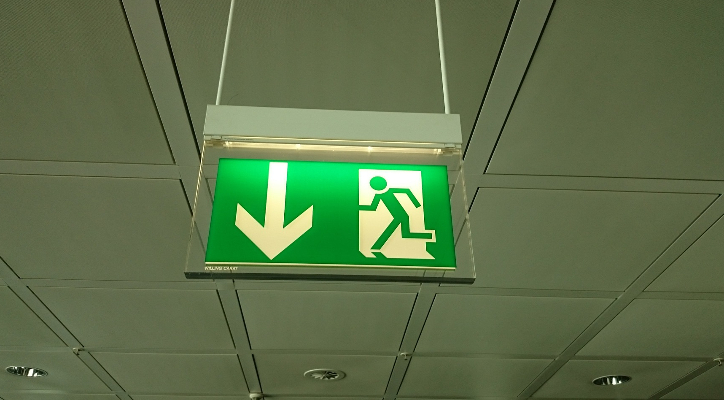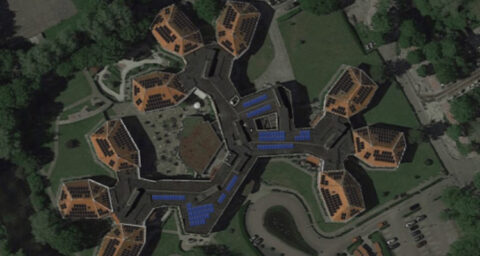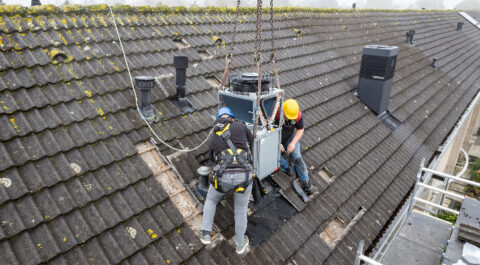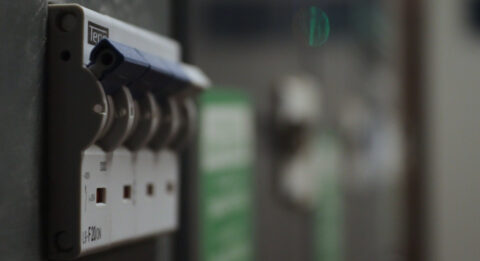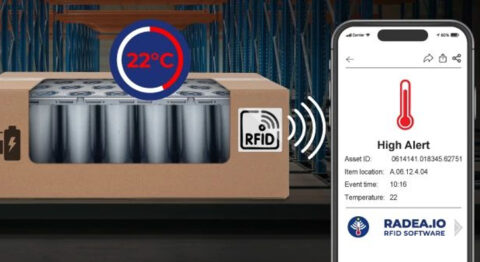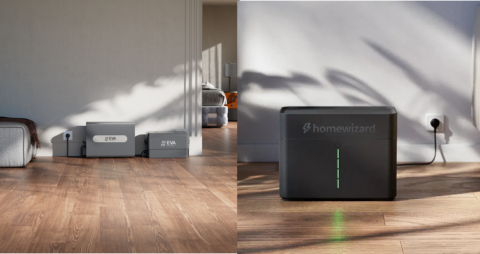Emergency lighting: if you pay attention, you see signs all around you. Many installers deal with this particular and important application of lighting. In this piece you will find all the background information: what is emergency lighting, what rules apply, and where can you learn more about it?
What is emergency lighting?
Emergency evacuation lighting, commonly called emergency lighting for short, is lighting that helps people leave a location in the event of an emergency and the ensuing power outage. It also makes it possible to shut down a (dangerous) process before people can leave. Emergency lighting automatically turns on when the power goes out. The lamp is equipped with a mains connection, but it also features a battery/emergency power supply.
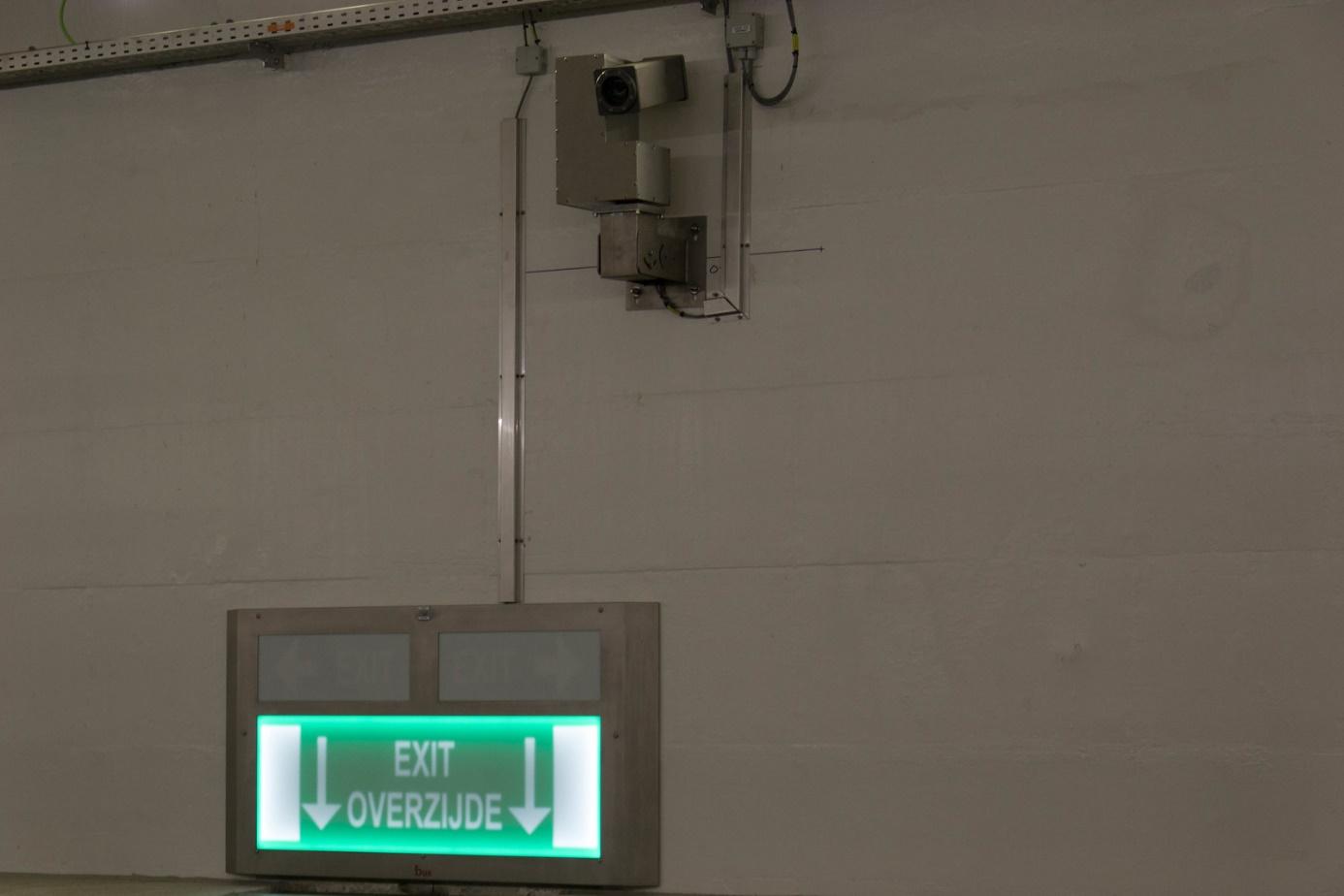
What types of emergency lighting are distinguished?
Emergency lighting includes three types of lighting. They are:
- 1 Escape route lighting, general lighting that comes on when the power goes out and ensures that escape routes and any obstacles on the escape route are easily identifiable. People can then safely exit the building.
- 2 Escape route signs burn permanently and mark an escape route. Everyone is familiar with the signs and lights in workplaces, movie theaters, soccer stadiums, and other public places. Escape route signs consist of green (RAL6024) pictograms showing a figure running into a door and an arrow next to it. The arrow points to the nearest emergency exit.
- 3 Anti-panic lighting comes on only when there is a power failure. It prevents panic and makes obstacles in the room visible. This allows people to reach a place from which they can follow the escape route in the event of an emergency.
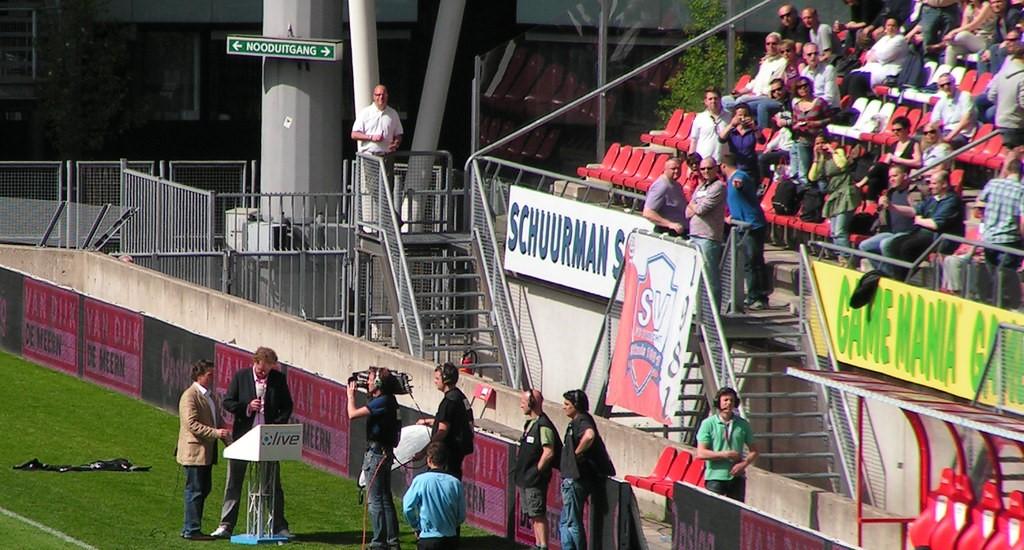
Is emergency lighting mandatory?
Yes, emergency lighting is mandatory. Both the Building Code and the Occupational Health and Safety Act state that the presence of emergency lighting is mandatory. According to the Dutch building code, the installation of emergency lighting is mandatory for accommodation areas in which many people (may) be present, think of office buildings, shopping centers, student houses or hospitals. According to the Occupational Health and Safety Act, adequate emergency lighting is mandatory if escape routes and emergency exits are poorly visible when lighting fails. Emergency lighting is also required if the failure of artificial light creates dangerous situations.
Where should emergency lighting be installed?
When designing a building, the architect has already thought about how best to evacuate it in the event of an emergency. The Building Code is always the starting point. If evacuation plans exist, they serve as the basis for the emergency lighting system. The NEN-EN 1838 guideline indicates where emergency lighting must be suspended, among other things. That is, for example, at stairs, road crossings, and at places where directions are changed. But emergency lighting must also be placed near fire extinguishers and on the outside of emergency exits.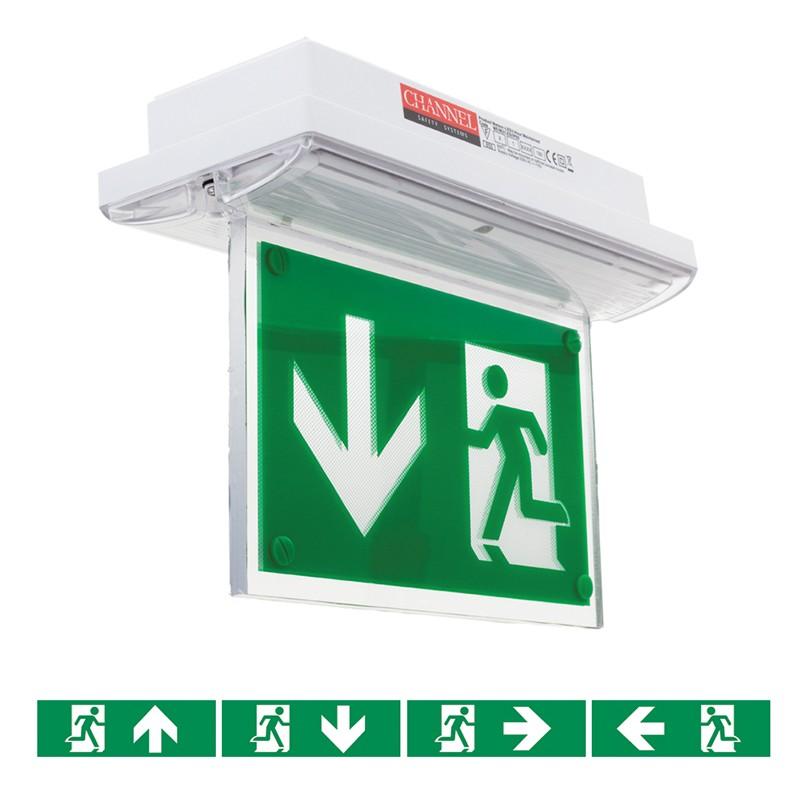
Do emergency lights need to be maintained?
Yes, it should and is even mandatory. Emergency lighting fixtures regularly have (invisible) failures. Batteries may not have enough capacity, or lamps may be broken. Furthermore, something may have changed since the previous service. Is an indication no longer correct, or has the layout of a building been changed so that the escape route can no longer be used? An expansion may actually have created a shortage of emergency lighting fixtures. So maintenance is necessary. It reduces the chance of malfunctions, extends the life of the fixtures and increases the effectiveness of emergency lighting. Maintenance is always aimed at ensuring the proper functioning of the installation for at least a year.
Emergency lighting maintenance: how is it done?
It is therefore mandatory to maintain emergency lighting. After all, you want to make sure everything works, in case of an emergency. That maintenance must take place annually. Using a step-by-step plan, the entire installation is examined. It always starts with a visual inspection: are the fixtures still hanging straight, are all cables still attached properly? Further components are: determining when the installation was last maintained, inspection of the exterior of the fixtures, a function test, replacing the lamp, inspection of the interior of fixtures and recording the findings in the logbook.
What is the difference between centralized and decentralized emergency lighting?
When installing emergency lighting, there is a choice between a centralized and a decentralized system. The main difference is in the location of the battery/emergency power supply. In decentralized emergency lighting, the battery for the emergency power supply is part of the fixture itself. With centralized emergency lighting, the emergency power supply is located centrally in the building. Several factors play a role in choosing central or decentralized. It is important to look at the size of the installation, whether there are central control options, whether it is new construction or existing construction, whether any expansions are planned.
What European and Dutch standards are there for emergency lighting?
The main standards are:
NEN-EN 1838: Applied lighting technology - emergency lighting
Describes lighting-technical requirements that emergency lighting in buildings must meet. Contains concrete and clear requirements about circumstances and responsibilities in the installation of emergency lighting. Applicable in combination with the Dutch Buildings Decree and Occupational Health and Safety Act.
NEN 3011: Graphic Symbols, Safety Colors and Signs
In addition to safety symbols and colors, defines the globally applied pictogram for escape route signs.
NEN-EN 50172: Emergency lighting systems for escape routes.
Describes the definitions of the preparation of an emergency lighting plan, inspection and maintenance and the creation of the logbook. See also NEN-EN 1838 and NEN-EN-ISO 7010.
NEN-EN 50171: Central power supply systems.
Defines the technical product requirements for central power supply systems of emergency lighting.
NEN-EN-IEC 60598-2-22: Special requirements, lighting fixtures for emergency lighting.
Describes the technical product requirements that emergency lighting fixtures must meet.
NEN 1010: Safety provisions for low voltage installations.
Requirements that an emergency lighting installation must meet; for escape route lighting and emergency lighting for medical areas.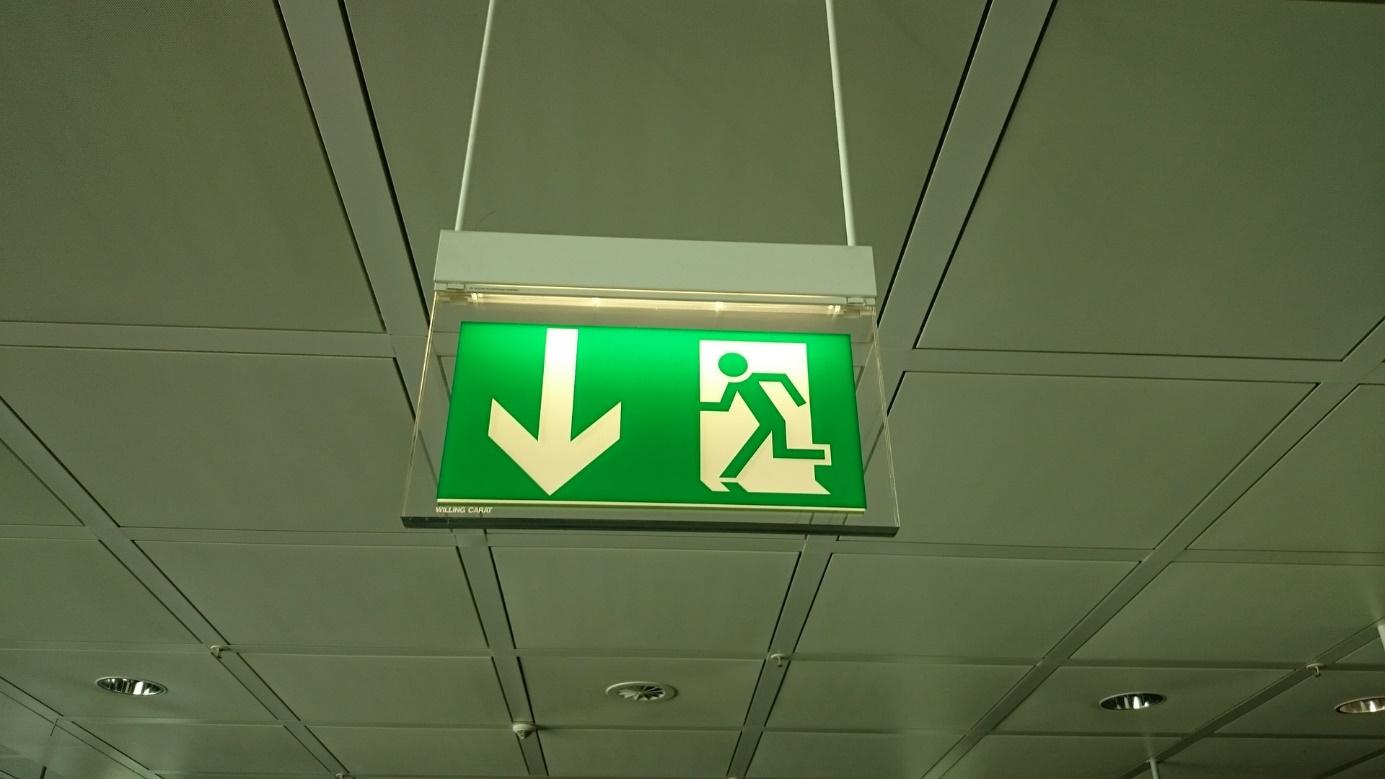
Where can I get emergency lighting advice?
Emergency lighting laws and regulations are generally defined. But every building is different, in terms of construction and materials, as well as the nature of its use. In this sense, emergency lighting is always customized. An escape route or emergency lighting system design is never just standard. The rules, laws and standards, so to speak, must be translated into a practically feasible and safe plan.
If you can't quite figure it out yourself, you can turn to the Emergency Lighting Knowledge Center. They advise installation companies, building owners, building users and consulting firms on safe escape routes in all kinds of buildings, such as offices, industry, stores, distribution centers, hotels, schools and healthcare facilities.
Where can I learn more about emergency lighting?
Education and training in emergency lighting provide increased safety. There are basic courses as well as special training courses focused on projecting, central emergency power systems, inspection or maintenance. You can find more information about training here. Hertek has several knowledge documents on emergency lighting that you can request.
The Famostar (Knowledge Center Emergency Lighting) site has a variety of webinars and knowledge videos. You can visit wholesalers and suppliers for product information on fixtures, batteries, lamps, etc.
